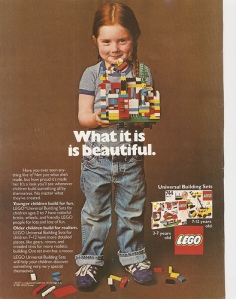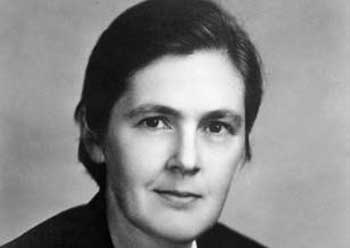This is a guest post by Ben McKenzie. This post appeared on his blog for Ada Lovelace Day 2011.
On Ada Lovelace Day we celebrate women working in technology and science who have inspired us. I have been definitely been inspired by women in science, from the famous like Ada herself and Marie Curie, to more recent heroes like student astrophysicist Amelia Fraser-McKelvie. But I’d like to talk about some of my friends, and in the wake of my participation in a discussion about feminism and games at Cherchez la Femme this month, specifically those working with computers and technology, like Ada did. All are inspiring to me, for their drive, their outlook, and their success, so I thought I would ask them a few questions to find about about them, and their inspiring women, in their own words.
Moran has over a decade of experience in the games industry; now living in Melbourne, she builds and designs video games, and teaches others to do the same. To spend even a few minutes talking games with her is to uncover an incredible depth of knowledge and passion for games in every facet of their existence, from code to controller.
How did you get into the games industry?
I studied mixed media practice at uni in London, originally planning to be an investigative journalist. I got hooked on animation at school and managed to land a job as an animator at a small indie studio when I graduated. Since then I have worked professionally as a games developer at companies like Sega and THQ, Â and have now come full circle to back to my independent roots. I also teach at RMIT University on the Games Graphic Design course where I lecture in maths and games design theory.
Why video games? What do you love about this work?
I love the technical and creative challenges that making games presents. They are multilayered digital puzzles, and there’s this cycle of figuring out what you want to do, and then figuring out how to make it happen. They are fractal beasts. The more you explore them the more there is to find. Plus, the technology is always evolving, so you have to keep up with it, and that pushes you. I love exploring the boundaries of what is possible, and finding new ways to tell familiar stories. Oh, and it’s also hella fun.
Who would you be writing about for Ada Lovelace Day?
Obviously Ada! She wrote the worlds first computer program for a then theoretical analytic device. Her work is the basis of modern computing, and she deserves to be better known. Similarly, it was a group of women who built and programmed the ENIAC, which was the first electronic computer, not that you’d know that from most of the histories. Coding used to be considered women’s work, until it became high value. Now it’s perceived as a masculine pursuit. Women in tech have been made invisible for too long now. We need to break that pattern.
Leena is a freelance writer, both for and about games; though she only started eighteen months ago she’s already written for MMGN.com, The Age“s Screen Play blog and a whole bunch of gaming sites, and is co-host of the GamePlayPodcast and the games correspondent for Tech Talk Radio. The first game to be released with her name in the credits will be the seventh Gamebook Adventures title for iOS, Temple of the Spider God.
How did you become a games writer?
I started with a blog, just quietly doing my own thing until people seemed interested in hiring me. I then cast out a net and worked for anyone who would let me, paid or unpaid, for the experience to then make it into a proper job. I went to as many industry events as I could find and talked to as many like-minded individuals as humanly possible. Much scotch was consumed. Oh the scotch. From there I’ve been offered amazing opportunities to work in a field I’m quickly falling head over heels in love with.
Why the love affair?
I love having an opinion. It was always a negative growing up. The over-opinionated only child stereotype was in full flight and it was always treated as a personality flaw. Once I grew up and mellowed a bit I realised I could temper it to be a powerful force – and one that could be capitalised on, at that. Taking what was once considered a flaw in my personality and turning it into a positive, constructive “thing” I had to offer was extremely rewarding, and mirrored my feelings about my favourite pastime. Playing games was always either a little bit geeky, or something only the boys in the street did, or something I was scared to talk about at school for fear of scorn. I love the fact I’m “out” now as someone who loves games so much, and that I can embrace my voice and my opinions about them. The thought of utilising those strong feelings to help make great games one day is something that inspires me immensely. Working in this industry makes me feel less broken.
Who would you write about for Ada Lovelace Day?
Brenda Braithwaite is a powerhouse of a woman – a stalwart of the games industry – who inspires me greatly. She stood up when people were saying that consoles would ruin the games industry and said “That’s bullshit”. She’s now standing up when people say games on social networks will kill the games industry and says “That’s bullshit”. She’s paving the way for many great game developers to come after her and to me that’s a lasting legacy that will stick and is something to be truly proud of. We need people to stand up and say when something is bullshit. Our industry is still in its infancy, and despite that there are many issues ingrained deeply into it. The only way we’re going to move forward and improve on our weaknesses is for people to stand up and say “That’s bullshit” and stop accepting the mediocre. She inspires me to want more from the industry and ask “Can’t we do better?”.
Catriona Wimberley
Catriona is a PhD student in medical physics at the University of Sydney, currently working at the Australian Nuclear Science and Technology Organisation (ANSTO). Though studying science, her career has been heavily entwined with technology, from computer programming to electronic engineering. She’s travelled around Australia and the world to present her work, and was featured in the Cosmos Ultimate Science Guide 2011 for prospective science students.
What are you working on for your PhD?
I’m working on kinetic modelling and parameter estimation in PET (positron emission tomography) imaging. In a nutshell, I take the images/data from scans and do some interesting mathematical modelling to find information about how the body/brain is working, or more importantly, not working, so that we can study how different neurodegenerative disorders (eg. MS or Alzheimers) progress.
How did you reach this point of your career?
A winding path where every opportunity was taken to explore exciting areas of research!
Before finally settling on the area of research I am currently in, I had worked in a biomedical engineering division (doing repair and maintenance of medical equipment), in a cardiology lab, a respiratory lab and a sleep lab (all doing clinical work). These placements helped me realise that I need more than a clinical or repair and maintenance job – I need to be able to think, create, analyse and innovate!
In final year uni, an opportunity came up to do a placement at the Bionic Ear Institute and I jumped at it. It was a great placement, gave me a taste of the research life, I was able to find out how part of the brain works using the computer and programming! But still… before I settled, I knew I needed to explore my other science love: physics.
I applied for the Nuclear Futures graduate program at ANSTO and was accepted into it. This program was what helped me decide that I truly did want to be a researcher. It was a rotational program so I got to work in an engineering project management role creating devices and upgrading safety systems, in the maintenance team for the OPAL research reactor; I wrote computer programs for physicists to interpret their data, I wrote reports about nuclear power for the Australian Government, I designed equipment to improve the quality of medical imaging – and from all of these adventures, I decided I wanted to specialise in medical physics – where else do you get the combination of physics, computing, maths and the end result is figuring out how the brain works?
What drives your passion for science?
I do it because I love finding patterns and meaning in data. I do it because I love programming and I love making programs that work and make life easier for people or elicit information. I do it because I get to think and discover new things about how the world works. I do it because it is fascinating and I couldn’t not do it.
I do it because I am curious and I need to figure things out. I love that I can lose myself in thinking and designing and analysing and interpreting.
Who would you write about for Ada Lovelace Day?
Marie Curie, for her ideas, her hard work and her drive to never give up. My PhD lineage can be traced back to her! Marie’s daughter Irene Joliot-Curie was also a chemist, and won a Nobel prize in 1935. Irene’s son Pierre Joliot is a biologist and was the PhD supervisor of Marie-Claude Gregoire, who is supervising me.
Also Elizabeth Blackburn [winner of the 2009 Nobel Prize for Medicine], for showing people that it is possible to have a highly successful science career and have a family.

This post is licensed under a Creative Commons Attribution-NonCommercial-ShareAlike 3.0 Unported License.
Want to highlight a geek woman? Submissions are currently open for Wednesday Geek Woman posts.





 Maud Menten was one of the first Canadian women to receive a medical doctorate, in 1911. Women could not do research in Canada in those days, so she sailed alone across the Atlantic to work at Leonor Michaelis’ lab in Berlin. During her year there, they developed the first model and equation to describe enzyme kinetics, the Michaelis-Menten equation. She worked for many years as a teacher and researcher at Pittsburg, making more important discoveries – she was the first to separate proteins by electrophoresis, and altogether, could lay claim to being the mother of biochemistry.
Maud Menten was one of the first Canadian women to receive a medical doctorate, in 1911. Women could not do research in Canada in those days, so she sailed alone across the Atlantic to work at Leonor Michaelis’ lab in Berlin. During her year there, they developed the first model and equation to describe enzyme kinetics, the Michaelis-Menten equation. She worked for many years as a teacher and researcher at Pittsburg, making more important discoveries – she was the first to separate proteins by electrophoresis, and altogether, could lay claim to being the mother of biochemistry.

